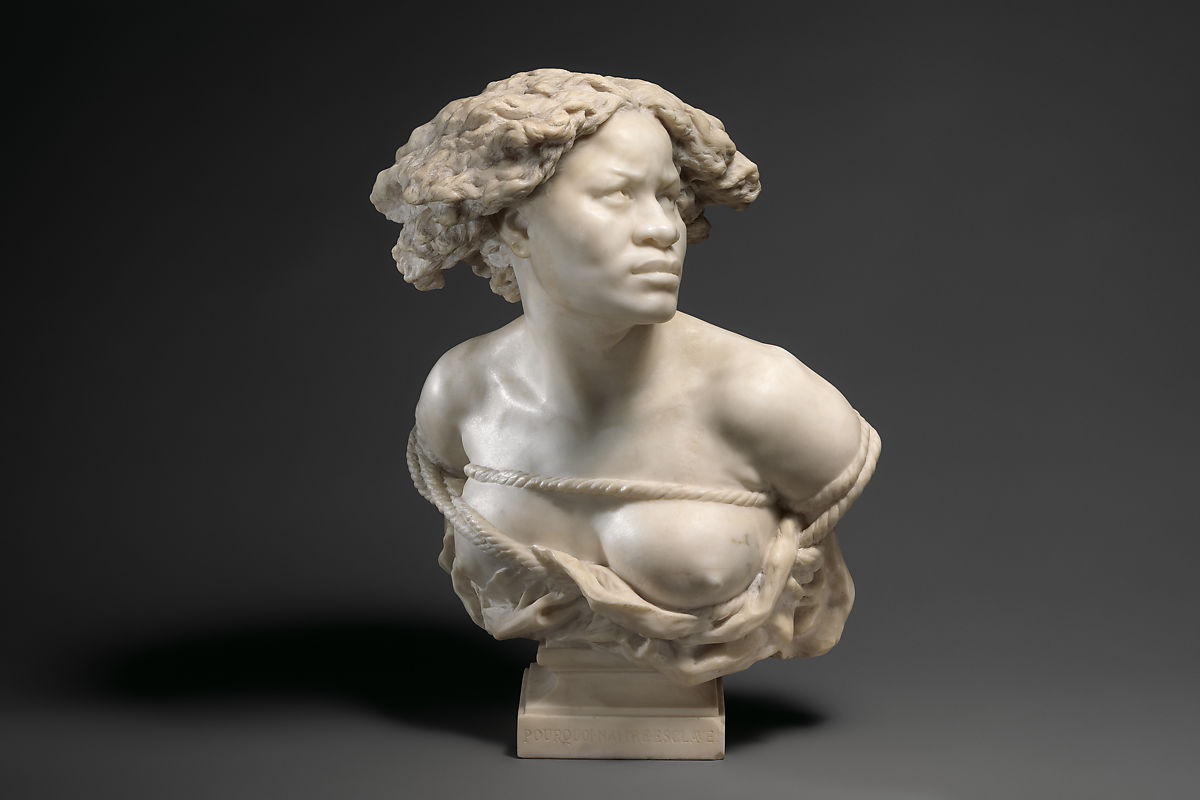
Why Born Enslaved! by Jean-Baptsite Carpeaux (1827-1875). Modeled 1868; carved 1873. Marble. Size: 22 7/8 × 16 × 12 1/2 in., 132.7 lb. (58.1 × 40.6 × 31.8 cm, 60.2 kg). Pedestal: 22 × 18 in., 1298 lb. (55.9 × 45.7 cm, 588.8 kg.). The Metropolitan Museum of Art. Accession no. 2019.220. Purchase, Lila Acheson Wallace, Wrightsman Fellows, and Iris and B. Gerald Cantor Foundation Gifts, 2019. Designated on the Met's website as being in the public domain.
There are several versions of this well-known bust, which the Met Museum describes as "perhaps the most well-known nineteenth-century sculpture of an enslaved Black figure." The Met commentary continues,
A virtuosic display of artistic achievement, the composition was modeled after an unidentified woman whose features Carpeaux recorded in exquisite detail. Yet this bust is not a portrait. Rather, it depicts the Black figure as an enslaved and racialized "type." Created twenty years after the abolition of slavery in the French colonies (1848), the sculpture was debuted in Paris in 1869 under the title Négresse, a term that reinforces the fallacy of human difference based on skin color. The subject’s resisting pose, defiant expression, and accompanying inscription – "Pourquoi Naître Esclave!" (Why Born Enslaved!) – convey an antislavery message. However, the bust also perpetuates a Western tradition of representation that long saw the Black figure as inseparable from the ropes and chains of enslavement.
Only one other marble version of the bust is known. The version on display at the Henry Moore Institute at the time of writing, in 2022-2023 (The Colour of Anxiety: Race, Sexuality and Disorder in Victorian Sculpture), is a gilt-bronze plaster version. — Jacqueline Banerjee
Links to related material
- [A Review of] the Metropolitan Museum of Art's The Passions of Jean-Baptiste Carpeaux” (2014)
- [Review of] The Colour of Anxiety: Race, Sexuality and Disorder in Victorian Sculpture at the Henry Moore Institute, Leeds (2022-23)
Bibliography
"Why Born Enslaved!". The Met. Web. 18 December 2022.
Created 18 December 2022